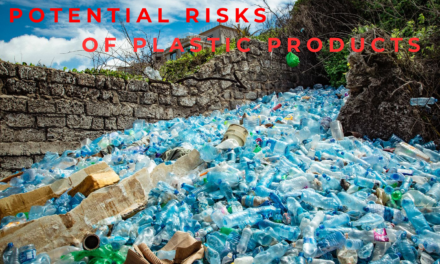Consumer preferences regarding the chemicals used in products are evolving significantly, driven by growing awareness of health, safety, and environmental issues. Here are some key shifts in consumer preferences:
1. Increased Demand for Natural and Non-Toxic Ingredients
- Shift: Consumers are increasingly choosing products with natural, non-toxic ingredients over those containing synthetic chemicals, particularly in personal care, cleaning, and wellness products.
- Impact: There is a growing preference for plant-based or organic ingredients, free from harmful chemicals like parabens, phthalates, and synthetic fragrances. Consumers are more inclined to trust products that emphasize “clean” or “natural” formulations.
2. Interest in Eco-Friendly and Sustainable Products
- Shift: Sustainability is a key consideration for many consumers, with increasing demand for products that are not only effective but also environmentally responsible.
- Impact: Consumers are looking for eco-friendly chemicals that are biodegradable, sustainably sourced, and packaged in recyclable or compostable materials. Brands are responding by developing more environmentally conscious products that use renewable resources and minimize environmental impact.
3. Transparency in Ingredient Sourcing and Product Composition
- Shift: Consumers are demanding greater transparency in the ingredients and sourcing practices used in the products they purchase. They want to know where ingredients come from and whether they are sustainably or ethically sourced.
- Impact: Companies are providing detailed ingredient lists on labels, using certification labels (e.g., USDA Organic, cruelty-free), and offering more information on sourcing and manufacturing practices. This shift is pushing brands to be more open and accountable to consumers.
4. Preference for Cruelty-Free and Ethical Products
- Shift: Ethical considerations are influencing purchasing decisions, with a significant rise in demand for cruelty-free and vegan products.
- Impact: There is a growing preference for products that do not involve animal testing or animal-derived ingredients. Companies are reformulating products to meet these ethical standards and obtaining certifications such as Leaping Bunny or PETA-approved.
5. Focus on Health and Wellness
- Shift: Consumers are more concerned about the potential health risks posed by certain chemicals, especially in personal care, cleaning, and food products. This has fueled the demand for chemicals that are safer and less likely to cause health issues.
- Impact: Consumers are avoiding ingredients known to cause allergies, skin irritations, or other adverse health effects. For example, many are seeking out chemical-free or hypoallergenic options in beauty and cleaning products.
6. Preference for Multi-Purpose and Simplified Products
- Shift: Consumers are moving toward products that serve multiple purposes, reducing the need for specialized chemicals in their household or beauty routines.
- Impact: This has led to the creation of multi-functional cleaning products and beauty products, which often feature simpler, more natural ingredients. These products appeal to consumers looking to minimize the number of chemicals in their daily lives.
7. Adoption of DIY and Home-Made Solutions
- Shift: There is a growing interest in DIY products made from natural ingredients as consumers look for more control over the chemicals they use in their homes.
- Impact: Many consumers are turning to homemade cleaning products using common kitchen ingredients (e.g., vinegar, baking soda, lemon juice) or seeking out brands that offer simple, customizable ingredients.
8. Rise of Non-Chemical Alternatives
- Shift: The growing awareness of the potential harms of certain chemicals is pushing consumers toward non-chemical alternatives, such as essential oils, plant-based cleaners, and natural personal care products.
- Impact: Many consumers are gravitating toward products that are free from artificial additives, preservatives, or fragrances, preferring natural alternatives like tea tree oil, lavender, and other plant-based solutions.
9. Interest in Performance-Driven and Sustainable Innovations
- Shift: Consumers are increasingly looking for products that not only meet safety and environmental standards but also perform well. Sustainability and effectiveness go hand in hand in the decision-making process.
- Impact: As a result, chemical companies are innovating to create high-performance products that also align with consumer values around sustainability. For example, cleaning products that work effectively while being free of harmful chemicals or beauty products with natural, yet effective, active ingredients.
10. Preference for Fragrance-Free or Low-Fragrance Products
- Shift: With increased awareness of allergens and sensitivities to fragrances, many consumers are moving away from products with synthetic perfumes or overpowering scents.
- Impact: Brands are introducing fragrance-free or lightly scented options, especially in personal care and household cleaning products, to cater to this demand.
Conclusion
Consumers are increasingly prioritizing safety, sustainability, transparency, and ethics in the products they choose. As a result, consumer chemical companies are adapting by formulating products with natural, safe, and sustainable ingredients while ensuring ethical practices, clearer labeling, and better environmental stewardship. These shifts reflect broader changes in consumer values and expectations, pushing the chemical industry toward a more health-conscious, eco-friendly, and transparent future.
Hashtags
#EcoFriendlyLiving #SustainableSolutions #ToxinFreeProducts #EcoConsciousChoices #CleanBeauty #GreenLiving #ChemicalAwareness #EcoFriendlyAlternatives #NaturalLiving #EcoFriendlyBeauty #EcoFriendlyHome #EcoFriendlyLifestyle #EcoFriendlyBrands #EcoFriendlyShopping #EcoFriendlyConsumption #EcoFriendlyCommunity #EcoFriendlyFuture #EcoFriendlyWorld #EcoFriendlyMovement #EcoFriendlyPlanet

















